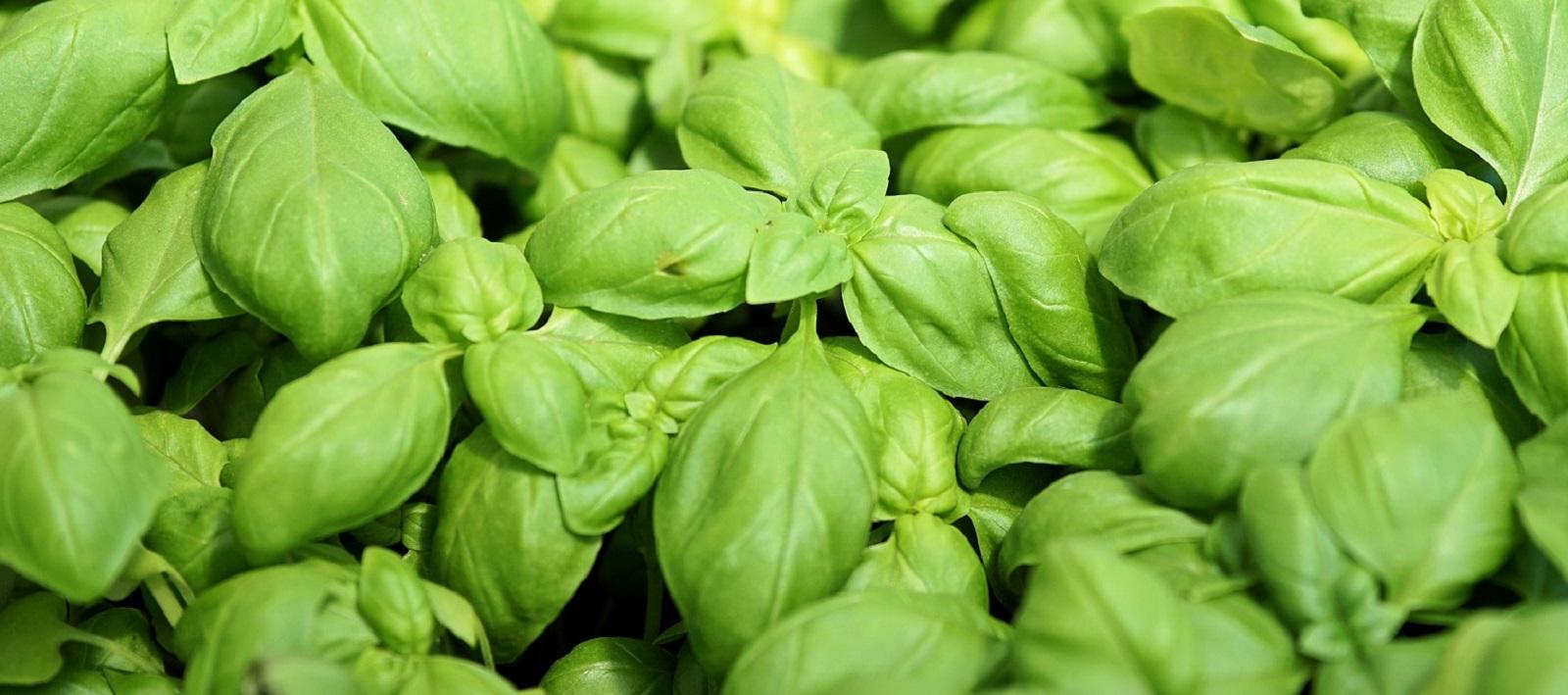Basil (Ocimum ssp.)
Description
Basil is an attractive annual, about 18 inches tall, that has deep green, fairly broad leaves. The flowers are small, white, and appear in spikes. There are several species of basil cultivated but sweet basil is the most popular type grown for culinary purposes.
Preventing basil downy mildew on sweet basil
Plant resistant basil varieties such as 'Obsession', 'Devotion', 'Prospera', and 'Amazel' to help prevent the disease. Seeds can be ordered from some online vegetable seed and plant suppliers.
Monitor your plants closely for symptoms and be prepared to pull out, bag up, and throw out infected plants. It is safe to eat leaves from infected plants- the disease does not harm people. If you lose plants to downy mildew you can sow fresh seeds in containers or in another part of your garden.
Warm, wet, humid weather encourages the spread of downy mildew. Plant basil in full sun locations and don’t crowd your plants. Good air circulation around plants can help reduce the risk of infection.
Culture
Basil grows easily from seed planted after all danger of frost has passed. Pinch stems to promote bushy, compact growth. Avoid lush growth as it may reduce flavor. If planted in rows, thin to 12" between plants and 18" between rows.
Harvesting
Green leaves can be picked about 6 weeks following planting. It is best to cut leaves for drying just before flowers open.
Use
Spicy-scented basil leaves are one of the most popular of all herbs used in cooking. Cooks favor basil for tomato dishes in either fresh or dried form.
Types of Basil
Sweet basil – The most common and popular type of basil. Select cultivars that are resistant to downy mildew.
Holy basil (Ocimum sanctum) – Used in Indian and Thai cuisine. Herbal medicines are made from the leaves, stems, and seeds.
Bush basil – Smaller, rounded leaves, and grows in a rounded form.
Purple basils – Bronzy-purplish foliage. Mostly used for decorative purposes and garnishes.
 English
English العربية
العربية Български
Български 简体中文
简体中文 繁體中文
繁體中文 Hrvatski
Hrvatski Čeština
Čeština Dansk
Dansk Nederlands
Nederlands Suomi
Suomi Français
Français Deutsch
Deutsch Ελληνικά
Ελληνικά हिन्दी
हिन्दी Italiano
Italiano 日本語
日本語 한국어
한국어 Norsk bokmål
Norsk bokmål Polski
Polski Português
Português Română
Română Русский
Русский Español
Español Svenska
Svenska Català
Català Filipino
Filipino עִבְרִית
עִבְרִית Bahasa Indonesia
Bahasa Indonesia Latviešu valoda
Latviešu valoda Lietuvių kalba
Lietuvių kalba Српски језик
Српски језик Slovenčina
Slovenčina Slovenščina
Slovenščina Українська
Українська Tiếng Việt
Tiếng Việt Shqip
Shqip Eesti
Eesti Galego
Galego Magyar
Magyar Maltese
Maltese ไทย
ไทย Türkçe
Türkçe فارسی
فارسی Afrikaans
Afrikaans Bahasa Melayu
Bahasa Melayu Kiswahili
Kiswahili Gaeilge
Gaeilge Cymraeg
Cymraeg Беларуская мова
Беларуская мова Íslenska
Íslenska Македонски јазик
Македонски јазик יידיש
יידיש Հայերեն
Հայերեն Azərbaycan dili
Azərbaycan dili Euskara
Euskara ქართული
ქართული Kreyol ayisyen
Kreyol ayisyen اردو
اردو বাংলা
বাংলা Bosanski
Bosanski Cebuano
Cebuano Esperanto
Esperanto ગુજરાતી
ગુજરાતી Harshen Hausa
Harshen Hausa Hmong
Hmong Igbo
Igbo Basa Jawa
Basa Jawa ಕನ್ನಡ
ಕನ್ನಡ ភាសាខ្មែរ
ភាសាខ្មែរ ພາສາລາວ
ພາສາລາວ Latin
Latin Te Reo Māori
Te Reo Māori मराठी
मराठी Монгол
Монгол नेपाली
नेपाली ਪੰਜਾਬੀ
ਪੰਜਾਬੀ Afsoomaali
Afsoomaali தமிழ்
தமிழ் తెలుగు
తెలుగు Yorùbá
Yorùbá Zulu
Zulu ဗမာစာ
ဗမာစာ Chichewa
Chichewa Қазақ тілі
Қазақ тілі Malagasy
Malagasy മലയാളം
മലയാളം සිංහල
සිංහල Sesotho
Sesotho Basa Sunda
Basa Sunda Тоҷикӣ
Тоҷикӣ O‘zbekcha
O‘zbekcha አማርኛ
አማርኛ Corsu
Corsu Ōlelo Hawaiʻi
Ōlelo Hawaiʻi كوردی
كوردی Кыргызча
Кыргызча Lëtzebuergesch
Lëtzebuergesch پښتو
پښتو Samoan
Samoan Gàidhlig
Gàidhlig Shona
Shona سنڌي
سنڌي Frysk
Frysk isiXhosa
isiXhosa